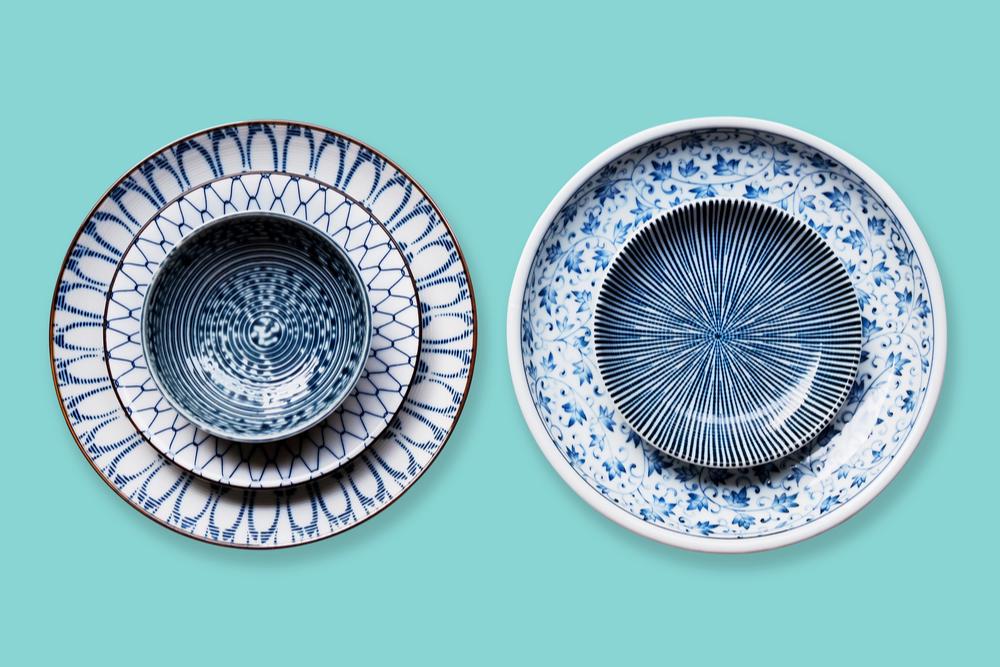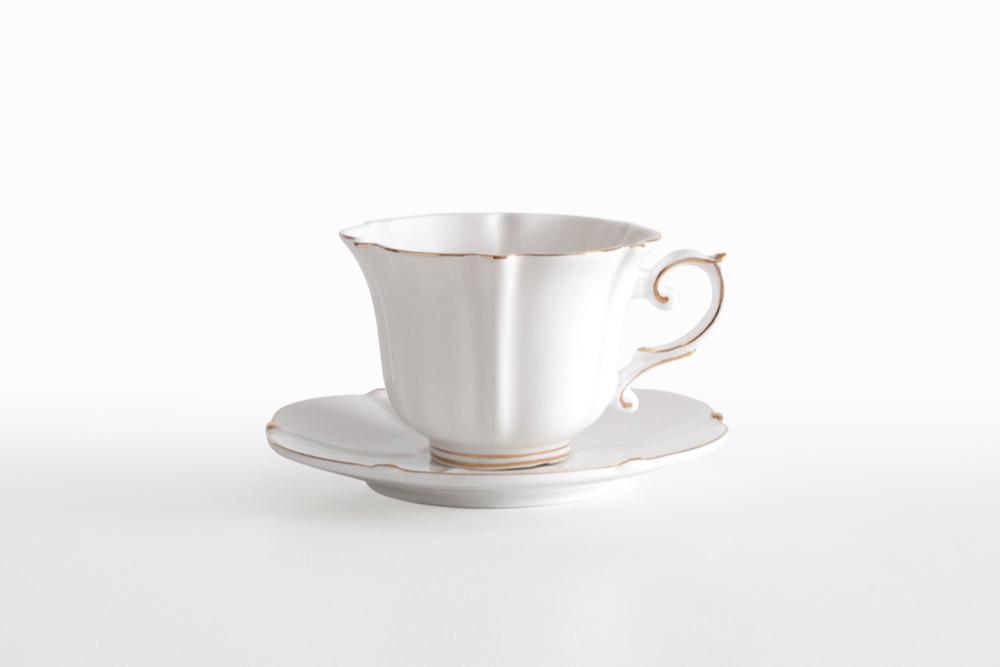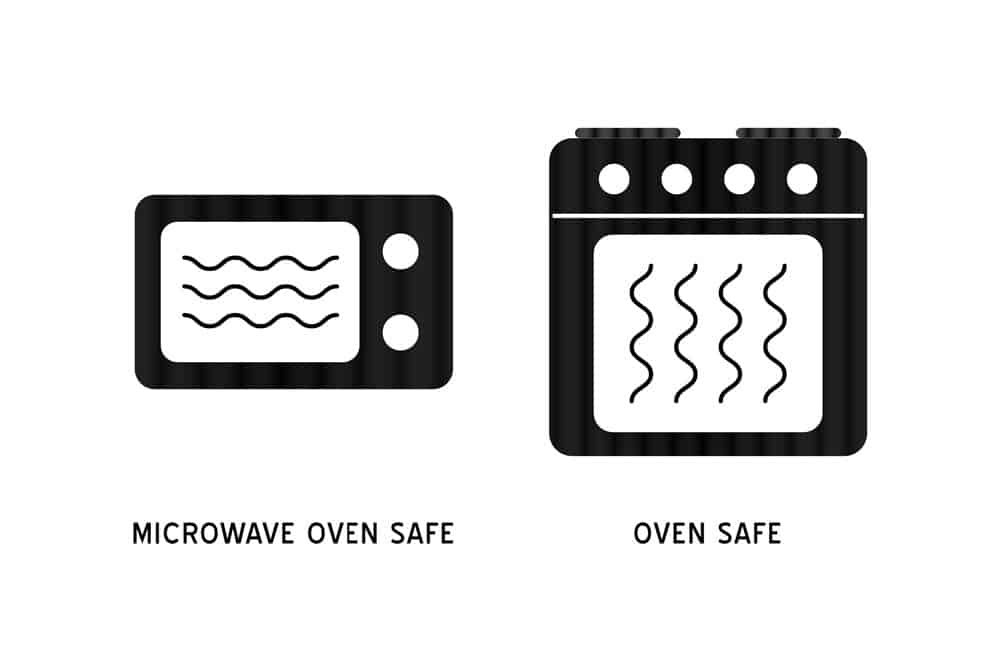You may have heard horror stories about people microwaving the wrong materials, causing home fires, ruining dishware, and destroying microwaves themselves. But microwaves are convenient and everyone uses them.
Learning what can cause problems is the key to safe microwave cooking. It’s difficult to know what is microwave safe and what is not. People often wonder, is porcelain microwave safe?
Porcelain is Quite Expensive - Avoid Damaging it By Keeping it Out of Your Microwave Oven
Porcelain is one of the more popular materials for dinnerware and cookware, so it’s useful to know how it can handle extreme heat and if it’s safe for the microwave.
To learn all about the durability and heat resistance of porcelain read this guide that explains porcelain cookware and dishware properties and how they handle different elements.
Porcelain is a ceramic typically created with kaolinite, kaolin, or china clay. To make porcelain, manufacturers shape the material and then place it in a hot kiln and heat it to 2,600 degrees Fahrenheit.
When manufacturers blast clay with heat, it hardens and takes on the shiny outer appearance most people associate with porcelain. The process results in a very dense and durable dish.
Because of the process of heating porcelain slowly in a kiln at very high temperatures, most people assume it is microwave safe. But it is not always oven safe and most people also consider porcelain fine china, so is it safe?
Using intense heat to make porcelain means that you can safely microwave it. While things like glass, plastic, wax paper, parchment paper, stoneware, and some ceramic plates will withstand heat in the microwave, porcelain will not.

Avoid Putting Porcleain in the Microwave - Especially Decorative Porcelain
When microwaving porcelain, the porcelain itself will not become hot but may warm up due to heat conduction from the food. So, most people don’t need to use an oven mitt or towel when removing porcelain items from a microwave.
But there are still some hazards to be aware of when microwaving porcelain plates, bowls, or mugs. Keep the below considerations in mind before placing porcelain in a microwave.
If the porcelain dish includes any painted designs (like metallic decoration), or if it has a decorative glaze, it may not be microwave safe. If there are any metallic additions or layers, you should not place porcelain dinnerware in the microwave oven because metals are not safe and the porcelain piece may contain harmful chemicals or materials.

Some Metals That Make Up Designs on Porcelain Aren’t Safe for the Microwave
Some decorative materials may leech off into your food and present a health hazard. Even if the designs on your porcelain don’t pose a health hazard, it is possible that some designs and paints present may become damaged or wear off in the microwave.
It’s not a good idea to place cold porcelain, like a porcelain coffee mug, in the microwave. While porcelain’s resistance is high, it can experience thermal shock if not properly transitioned from a cold environment to a hot microwave.
Thermal shock happens whenever something swings from extreme cold to extreme heat or vice versa. You should avoid doing this with all materials, especially glass and other ceramics.
Before placing frozen or refrigerated porcelain bakeware in the microwave, allow it to come to room temperature. Otherwise, the porcelain dish may crack or shatter when exposed to intense heat.
White porcelain is the simplest and purest form of porcelain, meaning it has no added colors, materials, or designs. White porcelain is the most microwave safe of all the porcelains because it doesn’t have any added features that may not be microwave safe.
Porcelain is a type of ceramic that doubles as fine china. While most ceramics are microwave safe, porcelain is typically the safest. Because of its high density and low porosity, porcelain won’t absorb heat from the microwave oven the way other ceramics can.
When choosing the best ceramic to microwave, always go with your porcelain dishes unless they have heavy designs or a metal lining.
The best way to ensure a dish is microwave safe is to read the label on the dish or any paperwork that came with the dishware. The label should indicate if it is microwave safe or microwave-friendly.

This Porcelain Set Shouldn’t be Put in the Microwave
But if the dish doesn’t have a microwave safe label or stamp or you no longer have the box and paperwork, you can test the dish in other ways.

Microwave Safe Labels That May Appear on Your Porcelain Dinnerware if it is Microwave Safe
Fill a microwave safe mug or glass with water. Place the dish in question in the microwave, along with the mug full of water. Microwave them together for one minute.
After one minute, touch the dish and touch the water. Be careful as either of them could be hot.
If the dish is hot and the water is cold, it means it is not microwave safe because it absorbs heat. If the water is hot and the dish is not, the dish is microwave safe.
To shed some light on what can and can’t go in the microwave, here are microwave safe items that experts advise you to use when microwave cooking. But ensure none of these items have any pieces of metal or metallic decorations on them.
The following items should not be put in the microwave. Putting the following items in the microwave is hazardous and could result in a damaged appliance or a house fire.
Despite how high-end porcelain dishes are, they’re generally very low-maintenance. But if you want your porcelain to last forever, below are some helpful tips to ensure you don’t wear your items or damage them using poor cleaning techniques and products.
No one wants to destroy their dishware or have a hazard in their home, so it’s important to understand how durable the dishes you use are.
If you still have questions about using porcelain and how it functions in a microwave, you can read the frequently asked questions and answers below.
Because porcelain goes through the extreme heat of more than 2,500 degrees Fahrenheit in a kiln, it can withstand the heat from an oven. Most ovens do not get hotter than 500 degrees Fahrenheit, so most porcelain can easily handle this.
But the same rules for microwaves apply for ovens too, so any heavily-designed or decorated porcelain dishes should not go in the oven. But porcelain with metal designs or lining will be safe in the oven because metal can go in the oven, whereas it could explode in the microwave.
Even though porcelain doubles as fine china, it can go in the dishwasher. Make sure the porcelain dishes in question have not been hand-painted.
If you’re unsure, it’s best to hand wash your porcelain, so the designs and decorations are not damaged or destroyed.
If well cared for, a porcelain dish can last decades. Because they can withstand such high temperatures and have a non-porous surface, porcelain dishes are resistant to wear and will not crack unless misused.
Porcelain is typically more expensive than other ceramics because of the premium clay and materials used to create it. The process to make porcelain is an art form and takes special tools and skills to accomplish.
While there are cheaper ceramics than porcelain, there are also more expensive ceramics like bone china.
In summary, porcelain cookware and dishware are generally microwave safe. Consider if there are decorations or designs on the porcelain dish that may not be resistant to extreme heat. Hand-painted pieces should not be microwaved, especially pieces with metallic accents.
But porcelain is one of the most popular and useful materials for dishware because it's attractive and sturdy. In addition to its aesthetics and solid construction, it’s immensely heat resistant.
Whether an item is microwave safe is just one more enticing aspect when you consider what the best material for your kitchen will be.
